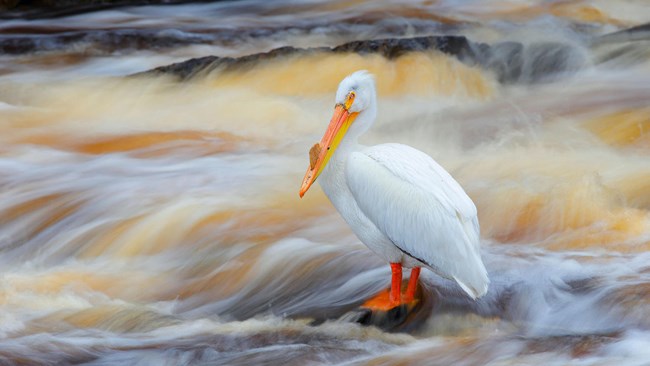Last updated: February 5, 2021
Article
White Pelicans

Photo: National Audubon Society
When they came around a bend, the mystery was solved – on a large sand bar the men found an estimated five to six thousand white pelicans.
The American White Pelicans (Pelecanus erythrorhynchus) spend the summer season breeding in an area from northern South Dakota into central Canada. They then return in the early fall to winter from central Mexico and east along the states bordering the Gulf of Mexico.
White pelicans are one of North America’s largest birds, measuring six feet from bill to tail. While awkward on land, they soar with incredible steadiness on broad, white-and-black wings. To feed, they dip their pouched bills into water to scoop up fish. But contrary to cartoon portrayals, pelicans never carry food in their bill pouches.
After Meriwether Lewis shot one, the men tried to determine the capacity of the bird’s great pouch. Sergeant Gass reported the outcome: “In the bag…we put five gallons of water.”
